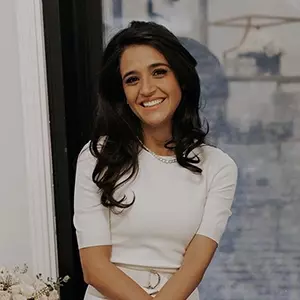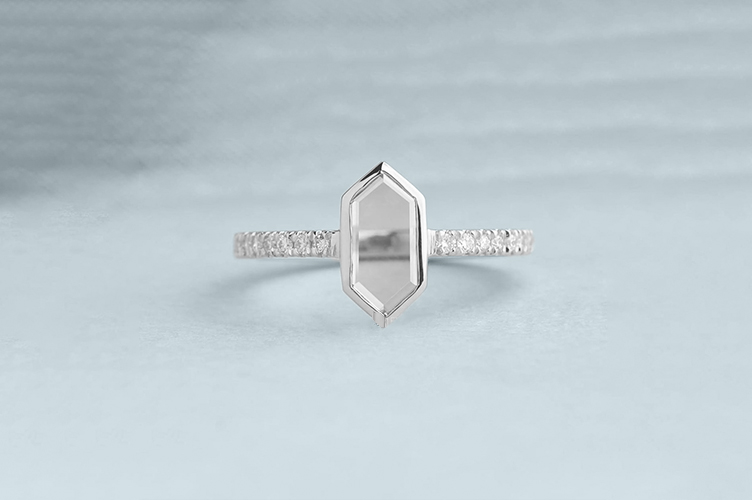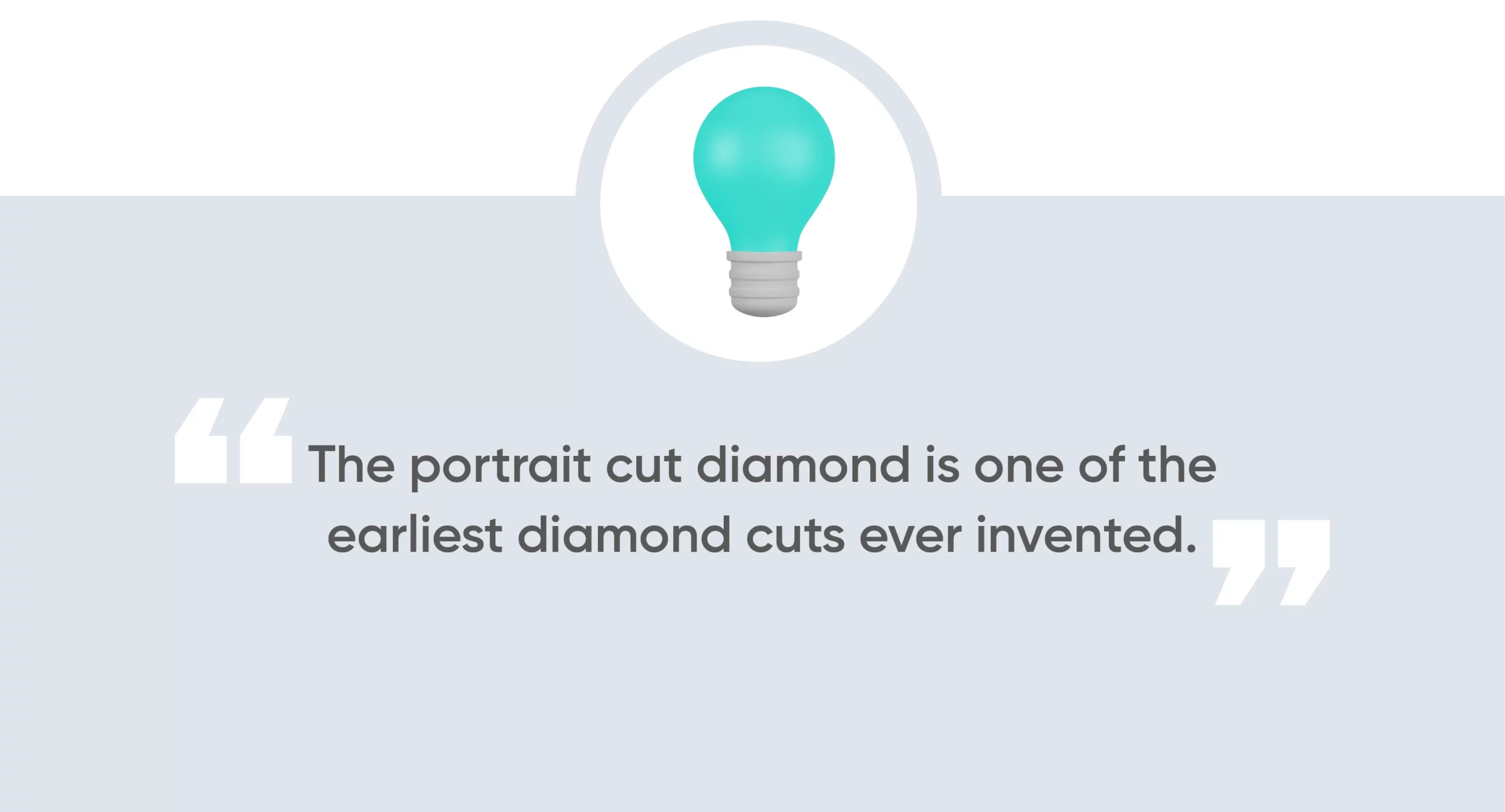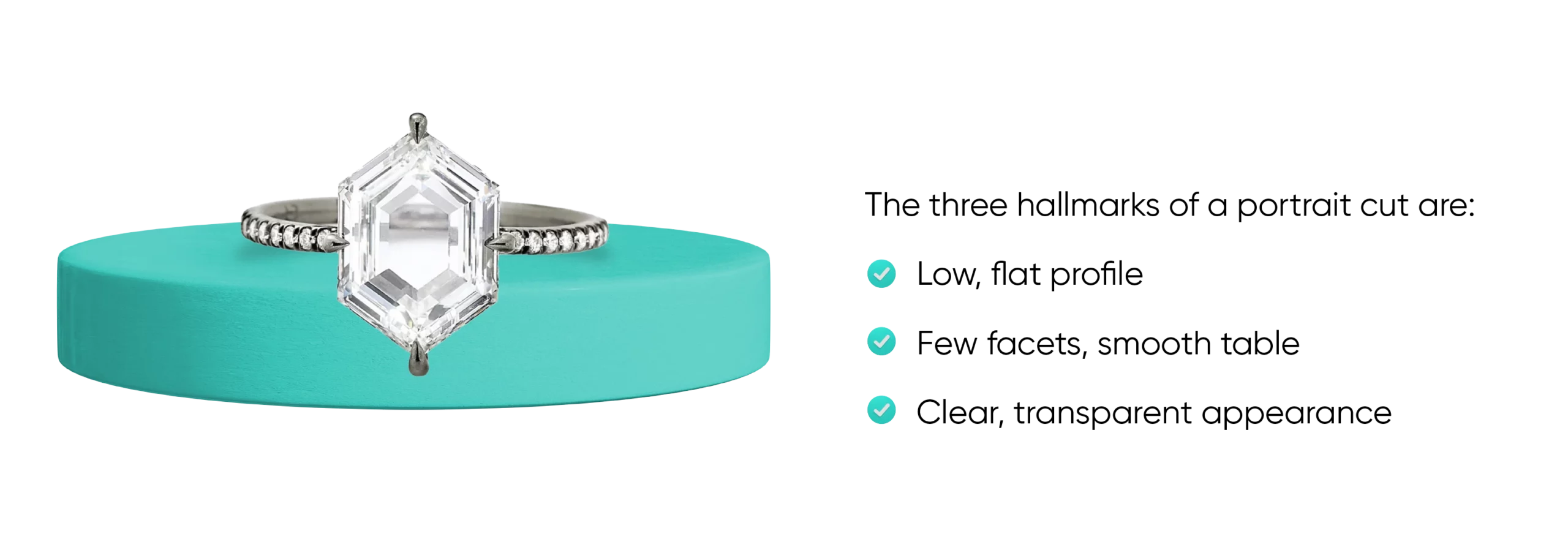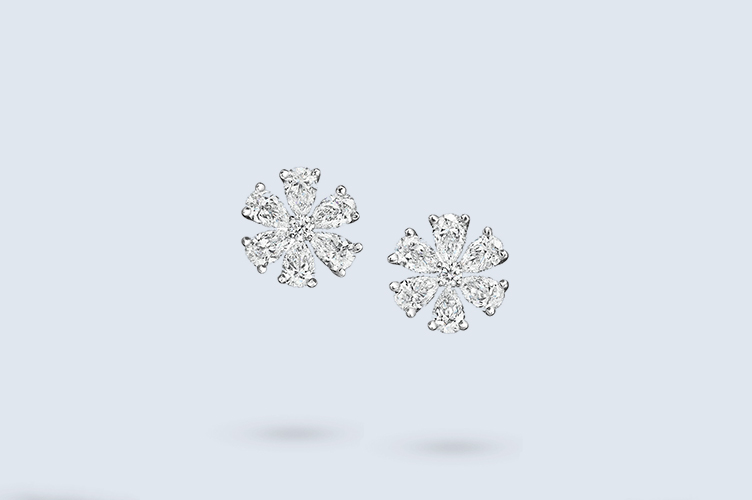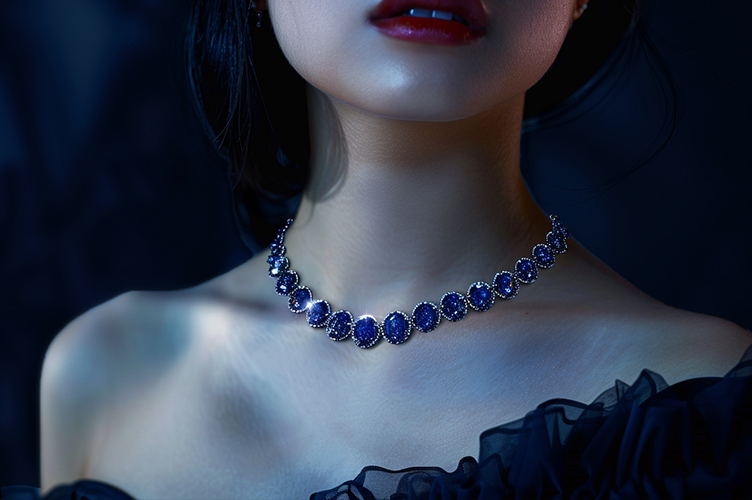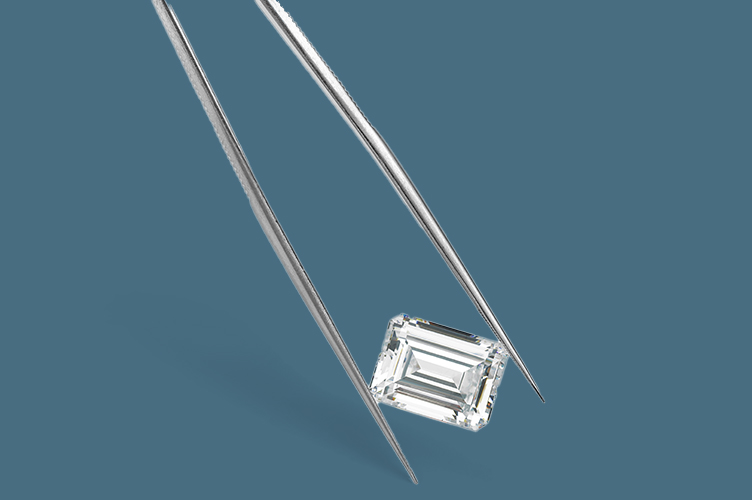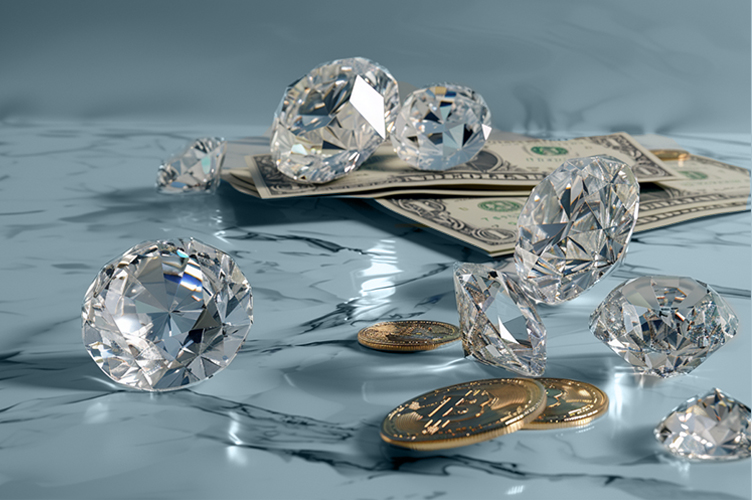Want a diamond that’s unique yet timeless? Consider the portrait cut diamond. This glass-like stone is becoming increasingly popular with celebrities, but time tells us it’s not just a passing trend. The portrait cut diamond is one of the earliest diamond cuts ever invented. Once you know the unique history of this unusual diamond, you might decide it’s the perfect choice for your engagement ring.
What You Will Learn
What is a Portrait Cut Diamond?
Before diving into the specifics of portrait cut diamonds, let’s first understand what differentiates them from other diamond cuts. Diamond cutting today typically involves cutting lots of tiny light reflecting facets across the stone. But unlike the brilliant or princess cut with these facets across their surface area, the portrait cut has a smooth, flat surface. The stone itself is thin, with a low profile, almost like a shard of glass.
The portrait cut dates back centuries, originating in ancient India, the site of the first diamond mines. It takes inspiration from the flat plane of miniature paintings. Most have a rectangular shape and resemble a mini-masterpiece for your finger.
The most distinctive feature of this ancient cut is the wide, flat table of the diamond. This broad surface showcases the natural beauty of the diamond. It’s transparent so that you can look through the entire diamond.
The three hallmarks of a portrait cut are:
- Low, flat profile
- Few facets, smooth table
- Clear, transparent appearance
Who Should Wear a Portrait Cut?
When it comes to engagement rings, every person seeks something that speaks to their individuality and personal style. Portrait cut diamonds offer an incredibly unique option that stands out from the crowd. While traditional shapes like the round brilliant cut may have eye-catching sparkle, portrait cuts add a touch of old-world charm and elegance to your ring.
A portrait cut diamond is a perfect choice if you appreciate history and artistry. These diamonds are reminiscent of an old world era, harking back to the earliest diamond cuts. The flat plane design of the portrait cut was to protect miniature paintings, showcasing the ingenuity of ancient artisans.
Celebrities With Portrait Cut Diamonds
- Actress Rooney Mara wears a simple portrait cut engagement ring that reflects her minimalist style.
- Kendall Jenner wears portrait cut jewelry.
- Blake Lively is said to be a fan of the portrait cut.
Suggested Reads:
Explore Rare Diamond Cuts for Your Engagement Ring
How to Choose the Perfect Engagement Ring Style for Your Partner
How to Shop for a Portrait Cut Diamond
When choosing a portrait cut diamond, it’s essential to consider the stone’s clarity. Most diamonds have at least a few “inclusions” or bits of non-diamond that get trapped inside the stone when forming. A stone’s clarity grade refers to how present or noticeable the diamond’s inclusions are to the eye. Traditionally, the diamonds chosen for portrait cuts were as clear and colorless as possible. The large clear surface of the diamond cut showcases this. Any visible inclusions will be on full display since there’s nothing to hide them. Most portrait cuts today still typically feature near-colorless diamonds with little to no inclusions. But don’t worry, that doesn’t mean you’ll only see sky-high prices. Since portrait cuts are typically thin, their carat weights are lower. Choosing lab diamonds over natural diamonds can also make them more budget-friendly. They’re a great way to showcase the purity of a diamond by using just a small amount of that diamond.
Keep in mind that each diamond is entirely unique. The presence of inclusions does not always diminish the beauty of the stone. In fact, “salt and pepper diamonds” are known for their many inclusions and overall gray hue. But typically, with a portrait cut, it’s all about showing off that clear, pristine clarity.
Navigating the Different Types of Diamond Clarity
Portrait Cut Diamond Engagement Rings
Now, let’s explore the many possibilities for incorporating portrait cut diamonds into your engagement ring. The rectangular shape of the portrait cut allows for a wide selection of settings and accompanying stones. From classic solitaires to halo designs adorned with pave diamonds or vibrant gemstones like rubies, the versatility of portrait cuts lets you create a ring that reflects your style.
Whether you prefer a minimalist band in white gold or a vintage-inspired setting in yellow gold, a portrait cut diamond will undoubtedly be the centerpiece of a show-stopping ring that is forever treasured. The flat shape of the portrait cut allows for endless creativity in designing your dream ring.
Remember, the perfect engagement ring reflects your love and personal style. Explore the world of portrait cut diamonds. Let their beauty and history guide you in finding the ring that will forever symbolize your love and commitment!
Do you need insurance for a portrait cut diamond?
Whether your diamond is a unique portrait cut or something traditional, you need to have it insured if you’ve bought a piece of diamond jewelry. And thanks to BriteCo, keeping your diamonds protected is affordable and easy.
BriteCo offers affordable specialty jewelry insurance that covers up to 125% of your ring’s appraised value. Our policy covers loss, theft, damage, and mysterious disappearance.
Get an instant free quote for an affordable monthly or annual payment. Then you have to upload the required documentation and get coverage in minutes.
Also Check:
Hexagon Cut Diamond | BriteCo Jewelry Insurance
The Edgy Elegance of the Shield Cut Diamond
Transitional Cut Diamond | BriteCo Jewelry Insurance
